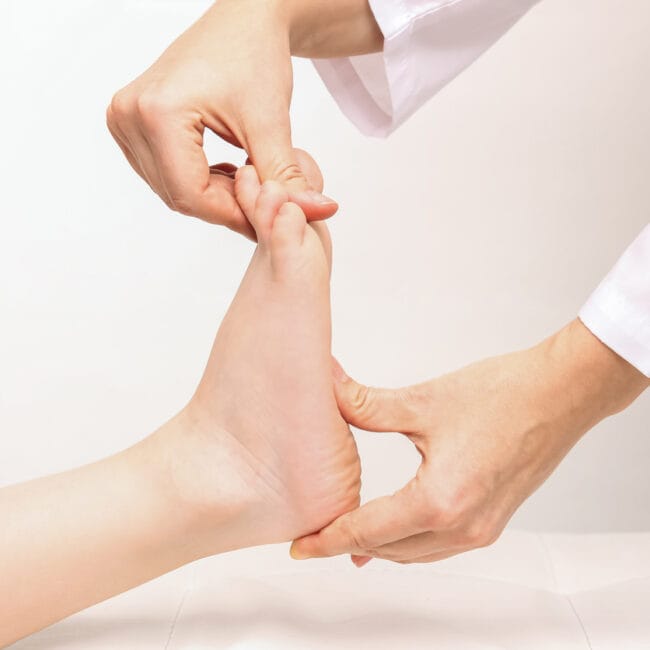The simple answer is, YES – you should be exercising for osteoporosis. Exercise is an important step in maintaining strong and healthy bones when it comes to healthy ageing. Current clinical guidelines recommend 30 minutes of exercise on most days for those suffering from osteoporosis. This blog aims to increase your knowledge of osteoporosis, as well as hopefully encourage you to become an active participant when it comes to daily exercise – whether you have osteoporosis or not!
Osteoporosis is derived from a combination of the Latin words for bone (osteo) and holes (porosis). The World Health Organization defines osteoporosis as, “a disease characterised by bone mass and micro-architectural deterioration of the bone tissue, leading to enhanced bone fragility and a consequential increase in fracture.” (WHO, 1994.)
Osteoporosis is a condition that can be prevented with physical exercise; however, osteoporosis remains a global problem with over 9 million fractures worldwide annually (NICE, 2012). The number of cases of osteoporosis increases with age – from 2% of 50-year-olds to 25% of 80-year-olds.
It has been estimated that 22 million women and 5.5 million men in Europe alone have osteoporosis; 3.5 million fragility fractures are caused due to osteoporosis and this number is estimated to increase to 4.5 million fragility fractures by the year 2025. The spine, hip, distal forearm and upper portion of the humerus are the most common areas for people to sustain an osteoporotic fracture.
Unfortunately, these kinds of fractures bring unwanted complications with them, such as increased stays in hospital, disability, increased costs and, in the worst case scenarios, it will reduce life expectancy: 20-30% of hip fractures result in death within 3-6 months of injury.
Risk factors for developing osteoporosis
Increasing age: bone structure maintenance declines with age
Gender: women have a higher risk than men
Body mass < 19 kg/m2
Premature menopause/post menopause or hysterectomy – this has a hormonal effect on bone health
Prolonged use of steroids
Alcohol consumption – 3 units per day
Smoking
Poor nutrition
Diagnosis of osteoporosis
Osteoporosis can often go undiagnosed until someone falls and has a consequential fracture, which results in an investigation of their bone health. A dual energy x-ray absorptiometry, known commonly as a DXA scan, is the most regular form of assessment for the diagnosis of osteoporosis and is a quick and painless test.
Bone structure
Bone tissue is different to others in our bodies, with an architectural structure of extracellular collagenous matrix. Our skeletal bone structure contains 99% of all the calcium we have in our body, with calcium salts deposited into this matrix. Calcium and bone metabolism status is controlled by two important factors: Parathyroid Hormone, and Calcitriol (a product of Vitamin D).
Healthy bone is maintained by a continuous process known as bone remodeling. This is where new bone is built through cells called “osteoblasts” and old bone is reabsorbed by cells called “osteoclasts”.
The way in which we can strengthen our bones is through bone mass – determined by the mineral content of the bone, the bone matrix itself, the different bone structure, and our balance of bone remodelling.
We reach peak bone mass by our third decade, meaning that exercise in our childhood and young adult years to build up strength will create a higher peak bone mass (bone density and strength). This is crucial as after this peak there is a gradual decline in bone mass, so it’s an important foundation to build! Both men and women can maintain bone structure through a combination of good nutrition and exercise, but genetic factors do play a part.
Why exercise for osteoporosis?
As we’ve just seen, exercising whilst young improves our bone mass and maintains bone tissue by encouraging new bone cell growth, maintaining a higher bone mineral content and bone mass density. For those who have osteoporosis, exercise programmes can be safely designed by physiotherapists or personal trainers and has been shown to reduce risk of falling by 25%.
It’s important to remember that bone is a living tissue which reacts to exercise in a similar way to muscle: it gets stronger. The level of exercise needs to form an over load, meaning it needs to be more than just normal daily activity, allowing for bone adaptation, muscle strength, coordination, flexibility and balance.
Weight-bearing exercise and resistance training are the best forms for this, which use gravity as the load.
What weight bearing means is walking, hiking, dancing, jogging or, even, stair climbing. Meanwhile, resistance training uses body weight, free weights, machine weights or TheraBands (resistance bands) to create a healthy load on the body.
If you are at high risk to osteoporotic fracture, low impact exercise may be safer than high impact exercise but consult a chartered physiotherapist first with any questions.
How can your physiotherapist help?
It is important to seek medical advice from your GP or physiotherapist before starting any exercise programme – especially if you are new to exercise or have other health conditions.
The physiotherapist will be able to put together a suitable individual-based programme that will progress through various stages.
If you are unfortunate to experience an osteoporotic fracture then the physiotherapist will become your new friend, as they will play an important role in the rehabilitation of your injury and get you back to fitness.
Preventing your risk of falls can help reduce the risk of fracture, and your physiotherapist can also perform a falls risk assessment with you. Following the results of this, you will receive a programme of exercises to help keep your bones strong, as well as improve your balance and co-ordination.














